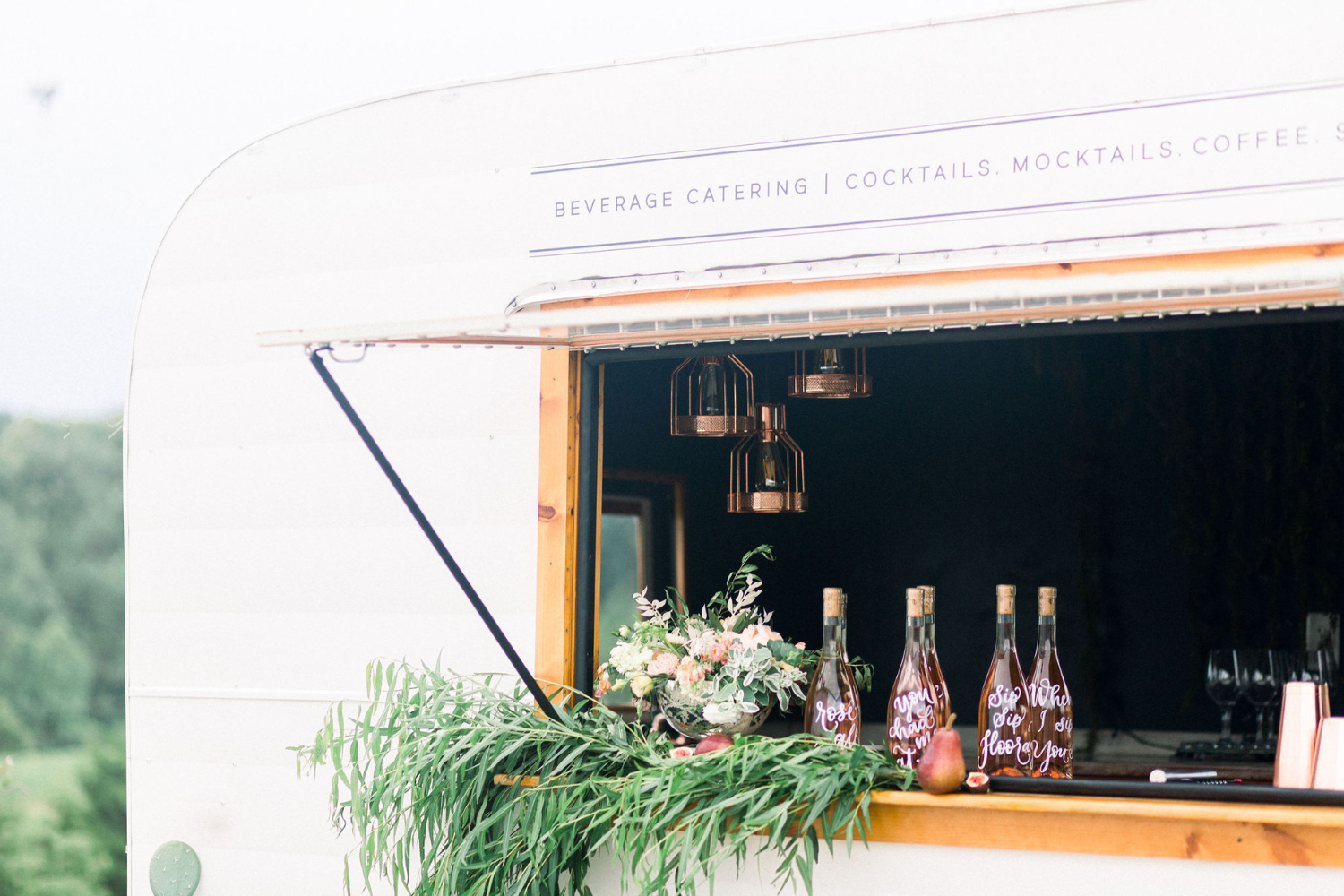How to Price Mobile Bar Services | Profit in 2025
Mar 26, 2025
How to Price Mobile Bar Services | Profit in 2025
This pricing guide provides an introduction on how to price mobile bar services for profit, exploring the three most common pricing strategies, such as a la carte, per guest, and all-inclusive pricing. We'll also cover a fourth method that ensures profitability and sustainability in this highly seasonal business called the "Four-Part Pricing Model."
Read on to find out more about the pros and cons of each of these methods and to start eliminating confusion on pricing your services.
Introduction to Pricing Mobile Bartending Services
In the competitive mobile bar services industry, pricing strategies play a crucial role in shaping customer satisfaction and business profitability. The way mobile bartending services are priced can significantly impact the attractiveness of the offerings to potential clients and ultimately determine the success of the business.
Value-based pricing is particularly relevant in this context, as it focuses on the perceived value of the service to the customer rather than just the cost of providing it.
When considering pricing strategies for mobile bar services, it's essential to understand the diverse options available and how they can influence customer decisions. A strategic approach to pricing can not only help in maximizing revenue but also in creating a competitive edge in the market.
By analyzing the market dynamics and customer preferences, mobile bar business owners can tailor their pricing structures to meet the varying needs of different client segments, ensuring a balance between profitability and customer satisfaction.
To illustrate, a mobile bar service that adopts a value-based pricing strategy may highlight the unique qualities of their craft cocktails or exceptional customer experience to justify premium pricing.
This approach positions the service as a high-value proposition, attracting clients who appreciate quality and are willing to pay a premium for an exceptional experience.

By aligning pricing with the perceived value of the service, a mobile bar business can enhance customer perceptions, build loyalty, and ultimately drive profitability in a competitive market.
A La Carte Pricing Strategy
The a la Carte Pricing Strategy, commonly used in mobile bar services, empowers customers to choose individual items or services from a menu at separate prices.
This approach is beneficial as it caters to customers with varying preferences, allowing them to customize their experience based on their specific needs and budget constraints.
However, one of the key challenges associated with this strategy is the necessity for strategic package design to avoid overwhelming customers with too many choices, ensuring a seamless and enjoyable decision-making process.
To illustrate, mobile bars could provide cups at an additional $1 per guest, or the client could opt to buy their own cups to save on expenses. The same would be true if you decided to make fresh fruit or fresh mixers an add-on for your delicious drinks.
However, it may take away from the experience you want to provide or how you want your brand represented if these things are optional. After all, who knows that your client won't just show up with Solo cups when you're trying to create a more elevated brand experience for guests?
Providing clients with a shopping list (outside of an alcohol list for dry hire mobile bars) risks your brand consistency across various events, as you can never truly know until you arrive if the client remembered beverage napkins, proper mixers, or even cups.
Still, this mobile bar pricing option enables customers to curate their unique package tailored to their tastes and financial considerations.

Moreover, the a la Carte Pricing Strategy fosters a sense of personalization and empowerment among customers, as they have the autonomy to build a package that aligns precisely with their event requirements.
By offering a wide selection of individual options, such as specialty drinks, mixers, conveniences, and additional services, mobile bar businesses can enhance the overall customer experience and satisfaction levels.
One of the cons of this model is the risk of getting lost in a sea of sameness, because this is the most common method it's easier for potential customers to compare the price of their event with other vendors in the area as it lacks emphasis on the unique experience that comes with professional bartending services.
Another con is the risk of overwhelming potential customers with decision fatigue. Without clear and concise package options, it's entirely possible for mobile bar businesses to lose potential customers due to pure confusion. The final problem with this model is that it attracts budget-conscious buyers who will keep your profit margins low.
Nevertheless, it is crucial for companies utilizing this pricing model to strike a balance between variety and simplicity in their offerings, ensuring that customers feel engaged and supported in their decision-making process without feeling overwhelmed by too many choices.
Ultimately, the a la Carte Pricing Strategy stands as a versatile approach that prioritizes customer choice and customization in the realm of mobile bar services, catering to a diverse range of preferences and event needs.
Per Guest Pricing Strategy | How to Price Mobile Bar Services
Per Guest Pricing is a straightforward method utilized by mobile bar businesses, where a set fee is applied per guest based on the desired package, irrespective of their actual consumption during the event and/or hours of bar service.
This approach offers event hosts and planners a clear and predictable cost structure, which can be particularly beneficial for gatherings with varying numbers of attendees. Nevertheless, it is imperative to accurately forecast the level of consumption to prevent pricing discrepancies.
Underestimating consumption may result in financial deficits, while overestimating could deter potential clients due to inflated costs.

An effective way to apply this strategy is by establishing a per-guest rate that encompasses essential bar services within a standard package, streamlining the pricing process for both the service provider and the client.
For instance, imagine a scenario where a mobile bar business sets a per-guest price for a cocktail party package that includes a selection of signature cocktails, bartending services, and a basic bar setup.
By offering this fixed rate, the host can anticipate the total cost based on the number of guests attending, facilitating budget planning and financial transparency.
There are, however, several cons to this method. The first is that having an accurate guest count and accurately predicting consumption levels is paramount to ensure you are not over or underpaid, as well as ensuring proper preparation.
Prepping and getting paid for 100 guests, and then showing up to 150 guests, is a disaster for both the mobile bartenders and the clients. The next is that this makes it easy for budget clients to remove items to adjust costs if you allow for this type of customization.
Which can be quite arduous with little return on energetic and monetary investment.
All-Inclusive Pricing Strategy
The All-Inclusive Pricing Strategy is a similar approach to the per-guest method that consolidates all the essential services and items into a single package price.
By presenting clients with a transparent and straightforward pricing structure, this strategy eliminates the hassle of making individual decisions about various aspects of the service, streamlining the booking process.
However, while the convenience of an all-inclusive package is appealing, it may limit the flexibility for customers to tailor the services to their specific preferences.
For example, mobile bar services can implement the all-inclusive pricing model by offering premium packages that encompass all the necessary items to convey your desired brand experience as well as travel within a certain distance before adding on a travel fee for additional miles traveled.

It can also encompass exclusive add-ons such as a personalized drink menu or upgraded glassware options at no additional charge.
These additional features not only enhance the overall customer experience but also allow the business to differentiate itself in the market by providing a more luxurious and tailored service under the umbrella of an all-inclusive pricing strategy.
This approach aims to appeal to clients seeking a hassle-free and comprehensive mobile bar service while still accommodating some level of customization within the predetermined package offerings.
While it works well for overwhelmed couples planning their wedding or corporate clients who want someone else to streamline their process, the main disadvantage is that it doesn't scale up or down very well.
For example, let's say your hourly rate is set for up to 150 guests, and someone reaches out about a mimosa bar for a private event of only 50 guests. You may inadvertently price yourself out of their range.
You'll want to consider how much lower your profit margins are at the full 150 count in that you'll need more product and potentially an additional bartender.
While this method can be attractive for its ease, it ultimately isn't very flexible and can easily be overpriced for smaller events and underpriced for ensuring profit on larger events.
Moreover, we have found from supporting over 1000 mobile bartending businesses that all-inclusive doesn't really mean all-inclusive in that there are seldom packages that include absolutely everything a mobile bar business offers without any additional charge.
Other Factors That Influence Pricing Mobile Bar Service | How to Price Mobile Bar Services
When it comes to setting prices for mobile bar services, the acquisition costs of a liquor license (in the event that you decide not to be a dry hire) play a significant role in determining the overall pricing structure. These costs can vary depending on the locational, legal, and other specific requirements, affecting the competitiveness of the service rates.
Understanding the target market's willingness to pay is another crucial factor that directly influences pricing strategies.
Performing the necessary market research to find out what your market can bear is crucial. By aligning prices with what customers are willing to spend based on the perceived value of the service, businesses can attract and retain clients effectively.
Moreover, the number of hours of service required for an event is a key consideration in pricing mobile bar services. Longer events may require additional staffing, inventory, and resources, impacting the overall cost to the business.
Factors such as the type of event, whether it's corporate events, birthday parties, baby showers, or golf tournaments, can also influence pricing decisions. For instance, a wedding reception often demands a higher level of service and customization, which may result in premium pricing compared to a casual backyard party.
In addition, it is of utmost importance to understand both the hard and soft costs associated with running an event. Everything from the number of bartenders, the price of consumables (beverage napkins, cups, straws, etc.), all the way up to insurance costs, and time invested in sales and marketing efforts should be factored into your pricing.

By carefully analyzing these various factors, mobile bar service providers can strategically price their offerings to remain competitive and profitable in the market.
The Four-Part Pricing Model
The First key to mastering profit in your mobile bartending business is to shift your mindset. We often grow up with an ’employee mindset,’ where making a sizable salary is the pinnacle of success. But when you’re the owner, the revenue you bring in doesn’t directly translate to your earnings.
Every cent you earn goes back into your business until you have covered all costs and can then start taking a profit. It’s essential to switch our mindset and understand profitability from a business owner’s perspective. Let's look deeper at the four pillars of this model:
Know Your Costs
This is a foundational step to pricing for profit. It includes familiarizing yourself with the essential costs of the product or service you offer. Think of everything you’d need to host an event: the mixers, the soda water, the simple syrup, the napkins, and so on.
These are the raw costs of delivering your service. This step, when skipped is often what causes the most amount of cash loss for a business.
We see mobile bar owners booking a multitude of events only to find their business in the red at the end of the year. Knowing your costs intimately is a great way to increase profit margins immediately in your business.
Labor Costs
Here, we consider the cost of the manpower required to deliver your service. This is an essential aspect, even if you’re the one doing all the work at the start. Remember, time is money.
Your goal should be to value your time according to your position in the company, aiming to engage in tasks that match your pay grade. For instance, as the CEO, focus on tasks that are worth $100 per hour rather than those that pay $15 per hour.
It's also essential that you include your time and labor in your overall costs when you're just getting started. Too often, we encounter mobile bar owners working events for free to avoid paying staff, conveniently undervaluing their own time and energy, thus creating even MORE of a mindset gap when the time comes to expand their business beyond their own capacity.
The 'PITA' Tax
Also known as the 'Pain In The Ass' tax. This is a unique yet crucial part of our four-part model. The PITA tax or service fee is what you charge for the hassle that customers would face if they were to do the job themselves.
This is your expertise fee, taking into account all the challenges and unforeseen costs that come with hosting events.
Marking-Up
This is where you finally start seeing a profit. After accounting for the above three cost categories, what you add now is your markup. This component not only ensures you make a profit but also that you have enough to fund growth and pay yourself.

Understanding and implementing the four-part pricing model is crucial for ensuring a healthy profit margin. It covers every aspect, from raw costs to the intangibles, ensuring you are fully compensated for your expertise and effort. This model guarantees that your business not only survives but thrives.
Bundling
Finally, it is essential that we mention that our four-part model is most effective when combined with the concept of "bundling" rather than "packaging." For more information on the crucial concept, head over to the Mobile Bar Academy to ensure your mobile bartending services are priced to profit this year.
Concluding Thoughts on Pricing Mobile Bar Services | How to Price Mobile Bar Services
When determining pricing strategies for mobile bar services, it is essential to consider various factors that can influence the pricing structure. Factors such as liquor license acquisition costs (where needed), target market preferences, hours of bar service required, and the cost of both staffing and goods all play a significant role in pricing decisions.
Getting crystal clear on your costs is paramount in determining prices that ensure profitability.
Inside the Mobile Bar Academy, we teach pricing for both dry-hire mobile bars as well as those with a liquor license, along with a host of other resources you'll need to succeed in the industry in record time.
Whether you're just getting started or you're elbows deep and seeing little to no profit in your business, we can show you the way.











